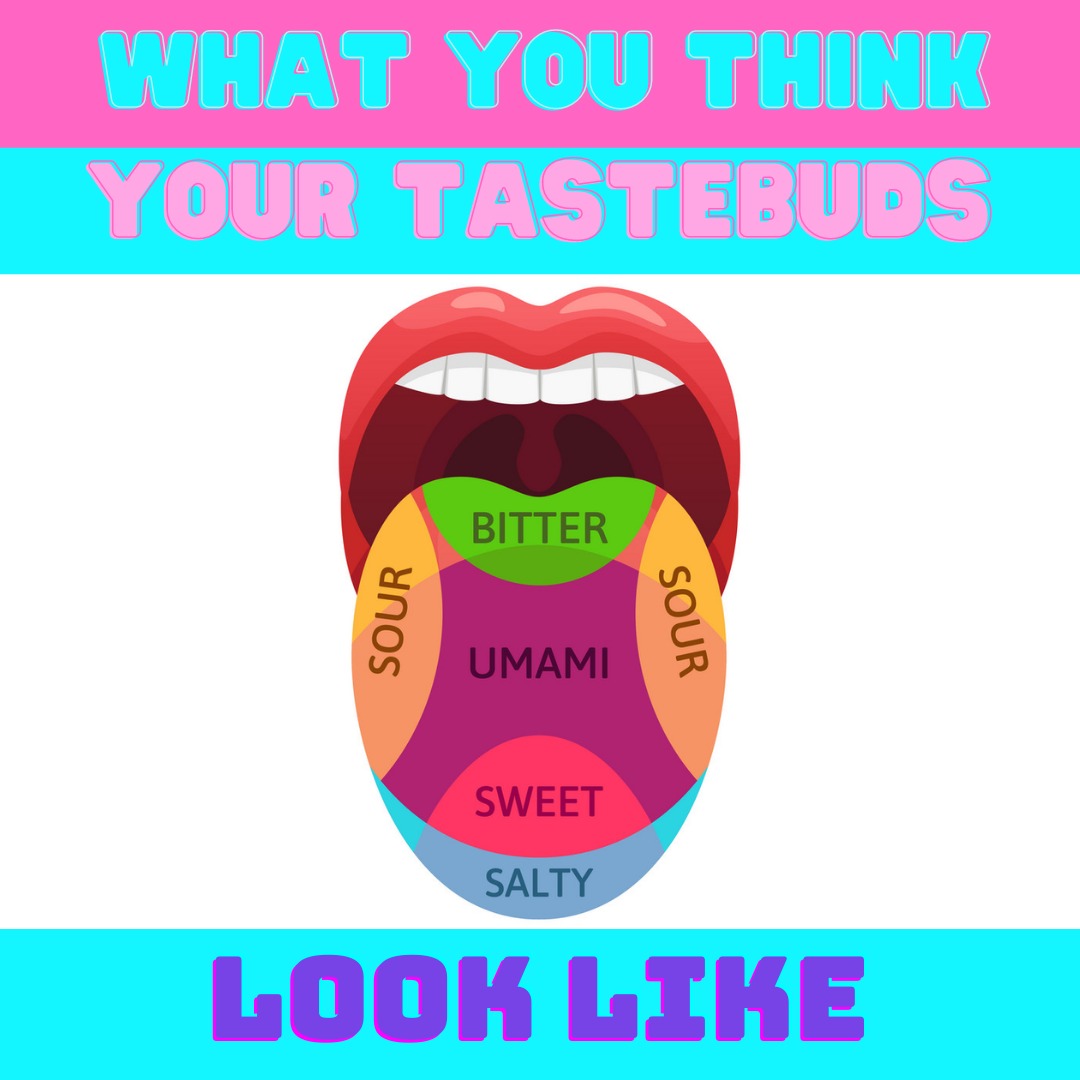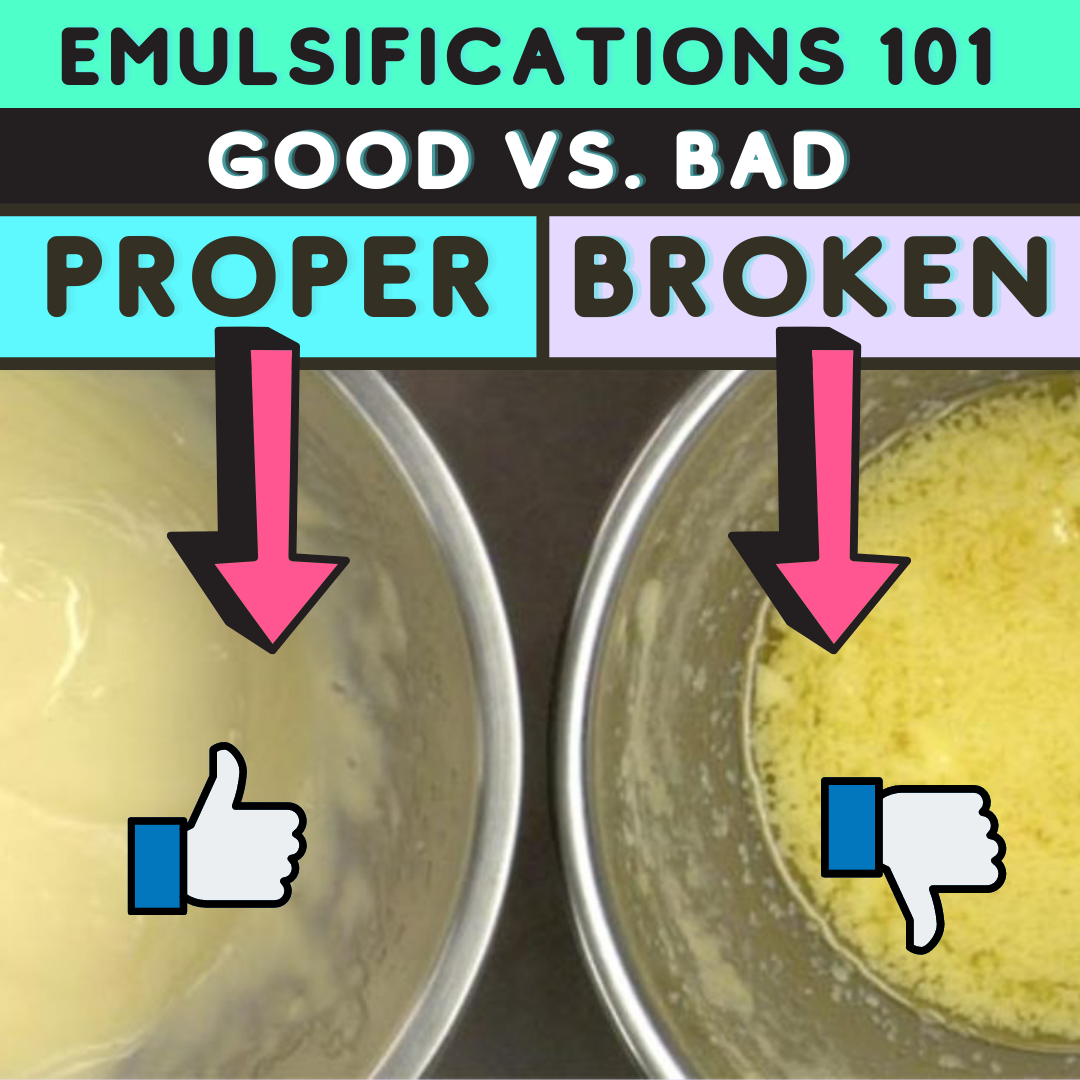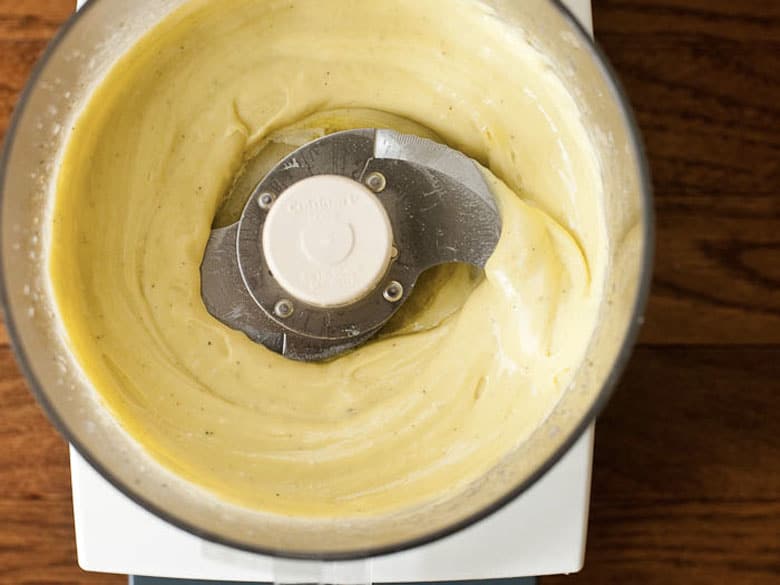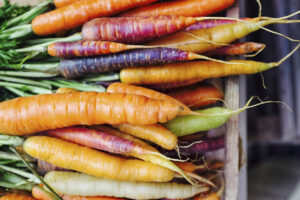Did you know you don’t taste flavor??
I know you’re probably thinking, “Erika, what the heck do you mean by that?”
Well, I mean that flavor is not a taste, it’s an aroma!

I know, it’s pretty shocking.
I can’t begin to count on my hands the number of times I’ve heard people say “oooh it tastes like a raspberry!”…or it tastes like this, or it tastes like that.
Which is a totally fair perception, I’d like to add. I still say this and probably always will, because it’s just a habit.
BUT, It’s not necessarily correct because we don’t taste flavors, we actually smell them. Thankfully, I’m passionate enough about this that I’m here to help you understand the basic science about what’s really happening behind the scenes, if you don’t already know.
Then what can we taste?
Truth is, we can only taste 5 tastes:
- Bitter – think kale (and many other greens), coffee, carrot peels, dark chocolate, etc.
- Salty – think pickles, canned foods, potato chips, soy sauce, salted nuts, etc.
- Sour – think citrus, pickled vegetables, unripe fruits, sour cream, etc.
- Sweet – think ripe fruits, red bell pepper, candy, desserts, etc.
- Umami – think mushrooms, parmesan cheese, tomatoes, meat, etc.
Taste and flavor is your tongue and nose simultaneously working together. If you follow my content, you’ll see this is something I frequently mention.
Read my blog on Why Salt Is The Most Important Ingredient In The World to learn more on 1 of the 5 tastes.
It’s SO important to understand this if you really want to understand the beauty of how our senses work together in making food taste good and how we can make it taste even better with a little knowledge.
I hate the flavor of the milk!
When you were a kid, did your parents ever make you sit at the dinner table until you finished all your food?
Mine still do. Just kidding, but that was me with my milk. If I think back as far as I can, I have never liked the flavor of milk. Of course I drank it as an infant and toddler, but soon after that I developed an extreme disliking for it.
- The flavor of it to this day makes me gag! If you’re looking for good alternative milk, my two favorites are oat and rice milk.
I can still remember it like it was yesterday, staring at that plastic dark blue cup full of milk, giving it the look of terror. I finally realized I had to bite the bullet and chug if I ever wanted to leave the table. There was no possible way I could stomach it unless I plugged my nose.

I didn’t understand why this was possible at the time, but I just knew that plugging my nose completely blocked the flavor of the milk and was the only way I could drink it.
That’s because blocking my nasal passage airflow was muting the milky flavor.
See what I mean? If you don’t believe me, try it for yourself. I remember the only thing I could taste was a hint of sweet (1 of the 5 tastes) with a fatty viscosity that left a coating in my mouth.
My least favorite part was when I had to unplug my nose and the aroma of the milk still lingered on my tongue.

Try this for yourself:
- Take an under-ripe raspberry
- Plug your nose
- Put it in your mouth
- Chew it
I guarantee, unless you have a hybrid alien tongue that does things unheard of, you will have an unwavering sour taste so strong that it will make your large parotid glands (the salivary glands at the back of your jaw beneath your ears) react strongly.

This is the same sensation you get from eating a Sour Head or shoving a lemon wedge in your mouth. This is a totally normal sensation, even when you get that sharp pain. It’s just your salivary glands being abruptly triggered to produce saliva, which is why we feel pain in the first place.
Then, unplug your nose and you’ll begin to smell the aroma of the raspberry.
***Your tongue and nose will work together in harmony to balance the aroma with the sour, sweet and bitter of the rasberry. Woah, delicious.
How our tongue processes the 5 tastes
Can you believe our tongues can range from having 2,000 to 10,000 taste buds? That may seem like a vast difference, but consider that all our tongues are different shapes and sizes, quite like the rest of our unique and beautiful bodies.
Those thousands of micro taste buds are living in their own world, each assigned with their own purpose in life:
“you at the back…you’re salty, you right there, you’re sweet….and you over there, you’re bitter!”
I’m sure everyone reading this has at least once in their life seen those diagrams of our tongues with the “categories” of how those 5 tastes are placed on our tongue. These are simply not true!
INCORRECT:

CORRECT!!

The 5 tastes our taste buds have are scattered all over our tongue!
Think of the Skittles factory. They produce millions of Skittles at a time, but each flavor is done on its own. If they added all the colors of the rainbow at once, it would come out poop-brown.
But, when each color is set and ready, they are all mixed in giant batches and then bagged. Pour out a bag of skittles on a table and you’ll see that all the colors are beautifully scattered with very few concentrated spots of the same color. That’s how our taste buds are.

Our senses work in harmony
I wonder what it would be like if we didn’t have taste buds and our tongues were merely for breaking down food and talking.
- What would eating be like?
- What would food “taste” like?
Although I just stressed how we can’t taste flavor without aroma, flipping that back around is just as significant.
The 5 tastes aren’t more important than the aroma of food, and the aroma of food isn’t more important than the 5 tastes. You don’t taste flavor, but you don’t smell taste either. Are you confused yet? Because my head is spinning!
What I’m trying to say, is one doesn’t work without the other. They go hand-in-hand, like a well-oiled machine working together. This makes the receptors in our nose and mouth give us incredible experiences when we eat something that tells our brain “holy hockey sticks, this is delicious!”
Book Recommendation
When I was going to culinary school in Vermont, I was gifted a book by a dear friend called Taste What You’re Missing by Barb Stuckey. Anything relating to food peaked every sense in my body, so I soaked that book up in only a couple of days, reading every chance I got in-between classes and working full-time.
- This book is not only great because it explains the deep science behind how our receptors and nerves work together, but it’s loaded with simple experiments and activities to help put things into perspective for you.
- It also explains even more in-depth about how our other senses like sight and touch are a huge factor in how we perceive the deliciousness of food. Think about your favorite chip. Do you think you’d love it as much if it didn’t have that desirable CRUNCH? Heck no! I am guilty of downing an entire bag of kettle chips just to get that crunchy fix. Barb Stuckey goes deeper into this ideology for you. 😉
Barb Stuckey doesn’t just blab her mouth on her opinion, but proves true facts after countless hours of deep research, talking to flavor scientists, iconic chefs, experimentation of her own and so on.
You can read more about her, her book and the process of how she wrote this book in the link above. I also have watched many of her interviews on YouTube where she talks about her book, which I also highly recommend.
Below is one of my favorites I recommend you watch.
Why we need to understand how taste and flavor works to maximize our potential in the kitchen
If you love to cook, understanding how taste and flavor work together is extremely important in developing your palate and a feel for cooking. Cooking is not just your body going through the motions, it’s a feeling.
I never measure when I’m in the kitchen, unless it involves something very specific (or if I’m baking). You always have to use measuring cups, spoons or scales when baking…or it will rarely work out. Baking is a science with little leeway!
Cooking is also a science, but with more leeway! Thankfully NASA engineers don’t just slap together pieces of metal and attach a rocket at the end before sending astronauts off to space. Same concept.

Okay, maybe that was a bit exaggerated, but cooking is something you feel! Add a little more of this, add a little more of that. ALWAYS start by adding just a little at first, because you can always add but you can’t take away. The more you cook, the more you develop that feeling of how much of each ingredient you should add. It’s an art, truly.
Why you need to taste your food as you cook
When you’re in the kitchen, TASTE, TASTE AND TASTE. If you don’t, you will never learn how the flavor is developing and the tastes are changing as you go from adding something salty to sour. You’ll also begin to notice how flavors change when you caramelize something from a raw state. It’s incredible and mind-blowing how the depth of flavor develops.
I remember always being in a scramble to find a tasting spoon in the kitchen because that’s how often the cooks would be tasting their food. We could never keep up with them, and that’s how often you should be tasting too.
How to make the perfect aioli using taste and flavor
But first, quick history lesson: What is an aioli?
- Dating back to the 1800s, aioli was first invented as a creamy and pungent ‘sauce’ of fine-quality olive oil and truckloads of garlic. Yep, that’s it. I can just imagine there was a vampire apocalypse that prompted this creation.
- The garlic and olive oil would be aggressively mashed with a mortar and pestle and then seasoned with salt.
- As time went on, chefs and home cooks around the world adapted their own versions of aioli’s and the term is now universally used for all types of mayos and adaptations of aioli’s. It’s kind of what you make it now.
No one is judging you, just make it delicious for you.
Aioli vs mayo: similarities & differences
The main thing that these stepsisters have in common is:
They are both emulsions.
I’m sure you know that fats are not water-soluble, meaning water and oil do not mix. It’s also why splashes of water in hot oil pops and can be so dangerous!
Remember those liquid-density experiments in elementary school where we made our own lava lamps using dish soap and oil?

Yeah, those!
Well, the same concept is used with emulsions in cooking. If you blended that soap and oil in the right proportions, it would emulsify. Well, the soap would probably foam to high heavens, but you get my point.
Same thing when mixing oil, vinegar and lemon juice for a vinaigrette.
Mayos and aioli’s are both emulsions (if done right) and are definitely tricky to get the proportions of liquid-densities correct.
- If you add too much oil too quickly, there won’t be enough time for the oil to be absorbed into the liquid and it will break (meaning you will visibly be able to see the separation of fat and liquid). It’s a slow process that takes time and patience, but the consistency and flavor are well worth the labor of love.
- If you add too little oil too slowly, it will become thick very quickly or will most likely break from the heat of over-working it (think of friction).
What is an emulsion?
How exactly does an emulsion work? Emulsions happen when you vigorously mix two liquids that don’t mix. This rudely divorces them from their large bodies of liquid to itty-bitty droplets that are so microscopically small that it looks like a smooth, silky and velvety sauce. You’ll never know those were once two liquids that didn’t mix.
They are never permanently emulsified and can easily be “broken” if it gets too warm, if you overmix it or if you add more oil than the yolk can absorb.

History of mayo
- When mayo was adapted from the original aioli recipe by Provencal cooks, egg yolk and lemon juice were added.
- The fattiness of the yolk gave it a richer mouthfeel and the lemon juice helped balance it with a punch of acid.
- Chefs improved the original recipe by experimenting and finding that there could be more depth to the sauce than just having garlic and oil (which is still insanely delicious as-is, if you ask me).
- This was all done by tasting, testing and experimenting with different flavors in the kitchen while using the 5 tastes as a guide.
The flavor and aroma of the egg yolk and the acidity of the lemon juice, balanced with salt…it just…works. Taste, taste, taste. Too sour? Add a pinch more salt. Too salty? Add a pinch more lemon juice. Experiment so you can learn how to gain complete control when balancing tastes and flavors.
The fun part comes when you have the basic emulsification technique down and you can experiment with all sorts of different flavors like adding honey, soy sauce, nutritional yeast, fermented peppers, kimchi, black garlic or uni. You name it, you can create it.
Now that you’ve got that down, allow me to romance you as I explain the art of tasting while making aioli and why each step is important.
Like explained above, I never measure when I make aioli and I’ve more or less adapted my own recipe. Each time I make it I do something different and so can you.
In a dreamy world with my dreamy cabin nestled in the middle of the woods, this is how I’d make my aioli:
Down yonder in the woods
I’d walk to my chicken coop on the edge of a calm running river and pick a couple of warm fresh eggs from underneath my chicken’s bums. Each egg, differing in shades of brown and blue and beautiful spackled designs. I’d pick hard-stemmed garlic from my garden and some wild scallion.
Mise en place
I’d take it inside, get my mise en place in order (all my tools and ingredients in order) and begin the process. I crack the egg yolk, revealing a deep orange yolk. I separate the yolk from the whites and place it in my beloved food processor with blades as sharp as a great white shark’s teeth.
The spicier the dijon, the better
I add a hint of spicy dijon mustard, lemon juice, and a heavy pinch of coarse kosher salt. I start the food processor’s small but powerful motor and begin to watch the deep orange yolk splatter on the sides. The sharp blades fiercely chop the garlic into tiny pieces the longer it’s on.

Doubled in volume
I stop the food processor to scrape down the sides and make sure it’s all evenly mixed. I turn it back on and watch the yolky mixture begin to rise and double in volume. The color of the yolky mixture begins to lighten as more air is whipped into it, giving me the green light to add my oil.
Slow and steady wins the race
I take my Mediterranean olive oil, deep forest-green in color, and slowly add it to my mixture with the blade still running. At the beginning, you always add very slowly until the oil begins absorbing more easily and quickly.
Thick ‘n’ thin
I increase my oil flow and notice that the aioli is becoming rather thick. I stop the motor, taste, make any adjustments, add a few splashes of water and start the blade again. The mixture loosens and gives me more room to add oil until it’s at the volume and consistency I want.
Get every last drop
I stop the motor to taste again and make any adjustments. Keeping the texture of the wild scallion is a must, so I remove the aioli from the food processor, making sure to scrape out each drop with my rubber spatula. I carefully fold in my sliced wild scallions and the sharp green onion aroma awakens my senses.
***That is how you make the perfect aioli. No, it’s not more perfect than yours. It’s perfect for me, because it suits my specific desires and quality of ingredients.
For the love of food
Food is a love language. From the way it’s grown, to the way it looks, to the way it smells, to the way it tastes. How a delicate seed is planted in the earth’s natural soil, growing strong to weather tough climate conditions, fight insect infestations and hungry animals.
How it’s cultivated from our farmers dirt-ridden fingernails so it can make it to our cutting board. It’s important to realize that there is so much that goes into that half-cut onion that’s been sitting in a ziploc bag rotting in your fridge for the past week.

Be food-conscious – where our food comes from affects the taste and flavor when we cook
Be mindful of how much food you buy and try not to let it rot in your fridge. I know I am a victim of this awful cycle, but I try to be better every time and you can too.
I know this may seem a bit off topic, but I’m emphasizing that every step to the process matters. The way our food is grown has everything to do with the way you perceive its taste.
The way those vibrant market carrots snap in between your teeth and how the sweet juices extract from them as you chew. To the slightly bitter aftertaste of the peel that lingers on your tongue. Those crucial steps that brought it to your doorstep in the first place take a major part in its individual taste and aroma.

The quality of your ingredients has a huge impact on the taste & flavor
You may notice how those big and bulky conventional horse carrots you get at the store always taste awful.
- Take note of how they were grown, what pesticides or GMOs were used, how it was handled, how quickly they were grown, how large they are, how it was transported and how those factors impacted the way they taste and smell.
The aroma is not nearly as pleasant or as sweet-smelling as those beautiful market carrots you can get from the farmer’s market nearby your house.
- Do your local farmers, your taste buds and your nose a favor by paying attention to where your produce comes from and how it was grown.
I promise you, that aioli you make will taste so much better with hand-picked eggs and garden-grown garlic like I explained. I don’t imagine most of you reading have my dream garden and chicken coop tucked into the woods, so locally grown eggs and garlic will do.
Give it a try side by side if you don’t believe me. Then send me a message to let me know your results. I would love to hear from you!
I challenge you to experiment, but most importantly, have fun!
I hope I was able to help give you a fresh perspective on taste and flavor! I understand it was probably a bit of a shock that you’re actually smelling what you think you’re tasting, but that’s what FOODSPLAINER is here for – to educate you, inspire you and challenge you to think differently.
Again, I encourage you to try the challenges I listed above, experiment in the kitchen and take note of where you buy your groceries. Every piece of the puzzle takes a huge role in what you taste and smell. But just make sure that huge roll it takes is fresh out of the oven and doused in salted butter. Yum.
Please subscribe to foodsplainer.com for more updates and info on new blog releases and podcasts or other fun facts!
Also follow us on IG @foodsplainer and join our FB group @Foodsplainer




